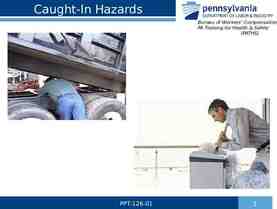FMMI Roadmap Linda Connolly Mike Brashear Afnan Chawla
25 Slides6.70 MB

FMMI Roadmap Linda Connolly Mike Brashear Afnan Chawla

A Look In The Rear View Mirror

FMMI Cloud Migration Project Scope: Conversion – Oracle Database to SAP HANA Upgrade – Enhancement Pack 7 Cloud Migration / Re-platform Benefits: Increase in Stability Increase in Performance Cost Savings

Datacenter Locations San Francisco Quality Assurance Disaster Recovery Vienna, VA PRODUCTION O&M SYS TEST O&M DEVELOPMENT O&M SANDBOX CUSTOMER DEMOBOX

First Level Dell EMC Virtustream

Datacenter Migration Vienna, VA (VFC1) Sterling, VA (VFC3) PRODUCTION PRODUCTION Quality Assurance System Test System Test Development Development Sandbox Sandbox Customer Demo Customer Demo San Francisco, CA (VFC2) Quality Assurance Disaster Recovery Boyers, PA (VFC4) Disaster Recovery

Datacenter Migration and Consolidation of QA August 5, 2018 – Migrated Development, Test, Sandbox, and Demo Landscapes. March 9, 2019 – Migrated Production Landscape to VFC3. March 30, 2019 – Migrated Quality Assurance to VFC3. Benefits of Consolidation Reduced Storage costs Removed datacenter to datacenter network costs Reduced overall server count Improved maintenance activities Quality Assurance testing can continue during a DR drill

Network Connection 1. End-user connects to USDA Universal Telecommunications Network (UTN) 2. Connection is routed to NFC datacenter in Denver 3. Travels over a 1Gbps Level 3 circuit to VFC3 in Vienna, VA 4. Virtustream routes connection to VFC3 in Dulles, VA End-User USDA Backbone (UTN) Vienna Datacenter Denver Datacenter Level 3 Circuit 1Gbps Sterling Datacenter

Network Connection 1. End-user connects to UTN 2. The UTN has two 10Gbps connections to the Cloud datacenter Directly connected to the USDA Network Less hops Bigger pipes Redundant connections AT&T Circuits USDA Backbone (UTN) 10Gbps 10Gbps Sterling Datacenter

Recent and Ongoing Upgrades ECC – Enhancement Pack 8 BW – Version 7.5 BOBJ – Version 4.2 PEGA – Version 8.1 CRM – Enhancement Pack 4 GRC – Version 10.1 PI – Version 7.5 HANA – Version 2.0 Enhance services to add value and drive efficiency and effectiveness of internal operations Reduce risk to the business and customers through consistent and stable business processes and systems performance Drive efficiency in resource allocation to promote scalability Increase the Quality to the Customer

S/4HANA What is S/4HANA? Main Drivers to Upgrade Changes and Benefits S/4HANA Preview Next Steps

What is S/4HANA? SAP Business Suite 4 SAP HANA Optimized for SAP’s in-memory database SAP HANA Two editions SAP S/4HANA On-Premise SAP S/4HANA Cloud Legacy software sunsetting at the end of 2025

Changes and Benefits New look and feel Simplified data model Business Suite integration

New Look and Feel From the Past To the Present

New Look and Feel Changes: New user experience Fiori launchpad Provides role-specific access to relevant apps and tasks Can be personalized Tiles can launch Fiori apps and classic transactions Works on other devices Digital assistance with voice recognition Intuitive search capability

New Look and Feel Benefits: Easier to use Gain flexibility to use on other devices Improved user productivity Decreased training time with intuitive screens Enhanced user satisfaction

Simplified Data Model Changes: Takes advantage of HANA technology Changes to the database structure Tables combined/deleted Redundant data eliminated No indices or aggregates (summary tables) Universal Journal Single source of the truth

Simplified Data Model Benefits: Data retrieval will be done very fast Calculations done on the fly Processing time reduced Performance Improved Smaller database size will be more cost effective

Business Suite Integration Changes: Re-integrates portions of SAP Business Suite products CRM / Grantor module Embedded Analytics Collection of all analytics features integrated in SAP S/4HANA Real-time analysis on the transactional system Many pre-built models and reports Brings transaction data and analytics into one platform Can be reported through various reporting tools

Business Suite Integration Benefits: May eliminate the need to have a separate data warehousing system and the need to replicate data - where the data is usually one day old Simplifies the environment Fewer servers Reduces system maintenance/support time and effort More cost effective

Next Steps Contract for FMMI Assessment Initialization System Scans (STAR , Business Scenario Recommendations, Readiness Check) Identify project team Benchmarking Discovery Workshops Pain Point Identification / Validation Analytics Assessment Roadmap Development Implementation approach

Implementation Approaches

Deployment Options On-Premise In the Cloud Hybrid Model

Any Questions?

In Closing






